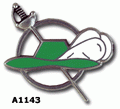|
Poslao: 31 Okt 2016 14:01
|
offline
- aramis s

- SuperModerator

- Pridružio: 18 Jul 2007
- Poruke: 29070
- Gde živiš: iznad smoga Beograda
|
FADEC odradi savršenu smešu.
|
|
|
|
|
Registruj se da bi učestvovao u diskusiji. Registrovanim korisnicima se NE prikazuju reklame unutar poruka.
|
|
|
Poslao: 07 Nov 2016 23:25
|
offline
- ray ban11
- Legendarni građanin

- Pridružio: 17 Sep 2010
- Poruke: 24149
|
ОДК поставит Китаю запчасти к двигателям для истребителей Су-27
Citat:МОСКВА, 3 ноября. /ТАСС/.
Объединенная двигателестроительная корпорация подписала с Китаем контракты на поддержку эксплуатации авиационных двигателей
Объединенная двигателестроительная корпорация (входит в госкорпорацию "Ростех") заключила с китайскими компаниями ряд контрактов на поддержку эксплуатации и поставку запасных частей для двигателей типа АЛ-31Ф (для истребителей Су-27) и Д-30КУ/КП (для магистральных пассажирских самолетов) самолетного парка Китая. Об этом сообщили в четверг в пресс-службе ОДК.
"ОДК подписала с Китаем контракты на поддержку эксплуатации авиационных двигателей. Корпорация принимает участие в международной авиационно-космической выставке Airshow China - 2016, проходящей Чжухае, где представляет российские авиационные двигатели и обсуждает с китайскими партнерами вопросы расширения программ сервисного обслуживания и перспективные проекты", - сказали в пресс- службе.
Там напомнили, что в конце 2014 года ОДК получила право самостоятельно осуществлять внешнеторговую деятельность, связанную с обслуживанием продукции военного назначения. Лицензия позволяет вести прямые экспортные поставки запчастей, комплектующих и технической документации к ранее поставленным двигателям.
Объединенная двигателестроительная корпорация - интегрированная структура, специализирующаяся на разработке, серийном изготовлении и сервисном обслуживании двигателей для военной и гражданской авиации, космических программ и военно-морского флота, а также нефтегазовой промышленности и энергетики. Одним из приоритетных направлений деятельности ОДК является реализация комплексных программ развития предприятий отрасли с внедрением новых технологий, соответствующих международным стандартам.
 [Link mogu videti samo ulogovani korisnici] [Link mogu videti samo ulogovani korisnici]
|
|
|
|
|
|
|
Poslao: 07 Dec 2016 15:23
|
offline
- djox

- djox

- Pridružio: 23 Nov 2010
- Poruke: 109436
|
Sve je gotovo za serijsku proizvodnju motora PD-14
На "Пермских моторах" готовы к серийному производству двигателя ПД-14
 [Link mogu videti samo ulogovani korisnici] [Link mogu videti samo ulogovani korisnici]
|
|
|
|
|
|
|
Poslao: 27 Maj 2017 10:44
|
offline
- djox

- djox

- Pridružio: 23 Nov 2010
- Poruke: 109436
|
Kraj...
Turbomeca Africa to close
Citat:Safran Helicopter Engines (Safran HE) has decided to wind up its 51% held South African company, Turbomeca Africa, with effect from June. The decision is based on projections of reduced demand for helicopter engines coupled with a reduced demand for helicopter engine maintenance, repair, and overhaul (MRO), resulting in part from the slow-down of offshore gas and oil operations internationally. The company is also in the process of scaling down or shutting its operations in Brazil, France, the United Kingdom, and the United States.
The South African state-owned defence group Denel, which holds the other 49% of Turbomeca Africa – formerly Denel Airmotive, in which Safran HE took a 51% stake in 2002 – will take up Safran HE’s stake, as the engine MRO capability is considered to be a strategic defence asset, required to support the South African Air Force’s helicopter fleet of Rooivalk, Oryx, and Agusta A109 aircraft.
 [Link mogu videti samo ulogovani korisnici] [Link mogu videti samo ulogovani korisnici]
|
|
|
|
|
|
|
|
|
Poslao: 13 Jul 2017 15:12
|
offline
- Toni

- SuperModerator

- Pridružio: 18 Jun 2008
- Poruke: 32299
|
Kazu prejak vetar u rep doveo do pozara motora
Citat:USAF pins F-35A engine fire on strong tailwinds
A US Air Force investigation blames a Lockheed Martin F-35A engine fire last September at Mountain Home AFB, Idaho, on strong tailwinds, according to an accident report released by the service this week.
Winds as high as 30kt blew during as the Pratt & Whitney F135 engine began a start sequence, forcing hot air into the Honeywell integrated power package's inlet. As air temperatures rose inside the IPP -- a mini-engine that supplies electric power and starts the engine -- a series of malfunctions occurred. The lower density of the air produced insufficient torque needed to to the engine, which slowed the rotation of the turbine section.
At the same time, fuel continued to supply the engine at an increasing rate, which spurred an engine fire that burst from the exhaust. The tailwind spread the fire across the aircraft and caused significant damage to a portion of aircraft’s aft section. The fire surrounded the engine’s exhaust nozzle, damaging several nozzle segments as well.
The pilot escaped but sustained minor injuries, including burns on his head, neck, face, and ears, the report states. The service has not yet determined the total costs, but estimates aircraft damages will cost above $17 million.
The report also lays blame on a lack of pilot awareness and training for tailwind conditions during an engine start. A pilot checklist included a warning that strong tailwinds during an engine’s start could cause an IPP failure, but the checklist made no warnings about the tailwind limit. The heavily automated F-35A engine start process also led pilots to believe the aircraft handled most of the start procedures and pilots assumed there were no problems if the dials were green, according to the report.
“Preponderance of evidence shows if there had been an expectation of engine startup problems with a tailwind, the [pilot] may have relied less on aircraft automation, and may have identified an abnormal engine start earlier,” writes USAF Colonel Dale Hetke, who conducted the investigation. “This vague awareness led to inadequate training for engine starts with a tailwind. Training also resulted in complacency and an over-reliance on aircraft automation.”
[Link mogu videti samo ulogovani korisnici]
|
|
|
|
|
|
|
|
|
Poslao: 20 Avg 2017 20:39
|
offline
- Pridružio: 09 Jul 2017
- Poruke: 282
|
Napisano: 08 Avg 2017 14:19
Tekst objasnjava zasto je zapelo sa ws 10 i kako je to konacno reseno u ws 10 B koje su lekcije naučene i kako planiraju nov razvoj avio motora.
According to the Liyang employee, the WS-10 initial variant (12.5 tonne thrust) received production certification recently, attaining development-termination status; that is, no more improvements can realistically be made on its design. Future production of that variant will be done according to the now-finalised specs and no modifications will need to be done to it thereafter. This entails the WS-10 variant that first flew in the early-2000s has now reached technological readiness level 9.
He knew this because Liming consulted with Liyang's experts on production certification. This is due to Liming's last production certification's being granted over forty years ago so that cohort has since retired, meaning the current Liming cohort has no experience with production certification. This contrasts to Liyang, which had concluded production certification in 2015 for the JL-9's engine so they have plenty of experience with production certification.
In answering further questions, he divulged additional info:
J-10 family will not transition to this production-certified variant because of its higher bypass ratio compared to the AL-31 family which entails its having less consistent power output during flight at high altitudes or during vigorous manoeuvres. The J-10 series is increasing the electronics content of every successive iteration from the J-10 to 10A to 10B to 10C, so it's imperative that the engine does suffer unpredictable drops in power output as the electronics cannot function without a consistent power supply. The WS-10B, on the other hand, does have decent prospects of future wide-scale adoption on the J-10 series. The Sino-Flanker series can mount the production-certified WS-10 just fine because of their twin-engine design which means both engines supply power to the electronics basically guaranteeing that, even if the WS-10s suffer power output drops during high-G manoeuvres, there would still be enough power from the two engines for the electronics.
The 2004 J-10 mounted with a WS-10A never reached design certification before being cancelled. However, valuable lessons were learnt from that experience.
The WS-10B has received or is in the process of receiving design certification.
The WS-15's nozzles are short and stubby, and comes with serrated edges. It'll be pretty obvious when a J-20 mounts them.
From another thread about the Minshan AL-222-25 copy, there were these tidbits:
The Minshan project was a technology demonstration project from the very start. Only 3-5 examples were made and underwent testing.
One such example, when undergoing testing, had its turbine disk shatter which flung out debris in all directions, puncturing the casing and severing hydraulic tubes. This resulted in a fire which got put out by the automatic fire extinguisher. The example thus met its end like so.
Chongqing Tianjiao Aerospace Propulsion Corporation, in cooperation with Ukraine's Motor Sich, competed with 624th Institute's AL-222-25 copy using the OG design. They ended up winning due to Motor Sich's willingness to contribute all its prior knowledge of the AL-222-25 series to the joint venture with Tianjiao as well as a prevailing expectation among industry and the PLAAF towards 624th that it should be conducting next-gen R&D - as it has the more talented aviation powerplant researchers - instead of spending their time reverse-engineering a low-thrust previous-gen design.
A few miscellaneous points from other threads that weren't as juicy:
The WS-13E is intended for use on the FC-31 in lieu of a 4th-gen medium-thrust engine. The original WS-13 (RD-33) is already sufficient for use on the FC-31 but 624th wanted a practice project before beginning a full-scale next-gen medium-thrust project, so they went ahead with the WS-13E.
The WS-13E has ~9 tonnes of thrust, with a TWR slightly lower than 8.
It is at a similar level of readiness as the WS-10B; so almost received or have already received design certification.
The WS-12 is the non-afterburning version of WS-13.
624th currently has two projects under its wings; the WS-500 500kg-thrust engine and the WS-13E. After completing development of these two, which is close, they will be progressing onto the next-gen medium-thrust engine (WS-19?), whose target thrust is slightly higher than the EJ200's.
青城 is project codeword for the WS-500, 黄龙 is the turbojet version of WS-500.
The WZ-10 turboshaft has been flight-tested and initial deliveries are to begin this year for further evaluation. Looking forward to seeing this on the Z-20.
The naval WS-10 is simply the WS-10 with additional anti-corrosion treatment.
Dopuna: 20 Avg 2017 21:39
Sustina ovog teksta je da rade sa Ukrajincima na novom motoru AL - 38 na bazi D 18 koji pokrece antonova 225 za putnicke i transportne avione .Al 38 bi imao potisak 30 - 34 tona malog volumea i tezine .U ovom intervju otkriva potpredsednik kompanije koja je potpisala ugovor sa motor sich . [Link mogu videti samo ulogovani korisnici]
|
|
|
|
|
|
|
Poslao: 31 Avg 2017 14:38
|
offline
- djox

- djox

- Pridružio: 23 Nov 2010
- Poruke: 109436
|
Россия начала разрабатывать двигатель ПД-35 для нового самолета
Citat:Российская сторона самостоятельно без Китая приступила к разработке двигателя ПД-35 для совместного широкофюзеляжного дальнемагистрального самолёта, заявил журналистам директор по международному сотрудничеству и региональной политике "Ростеха" Виктор Кладов.
[Link mogu videti samo ulogovani korisnici]
|
|
|
|
|
|
|
Poslao: 07 Sep 2017 11:14
|
offline
- Pridružio: 09 Jul 2017
- Poruke: 282
|
China's J-20, J-31 and H-20 fighter jets are now powered by homemade engines that feature single-crystal turbine blades that are manufactured using Rhenium metal.
Southwest China's Sichuan Province-based private firm, Chengdu Aerospace Superalloy Technology is capable of producing single-crystal turbine blades using Rhenium metal, Global Times reported Sunday. [Link mogu videti samo ulogovani korisnici]
|
|
|
|
|
|

